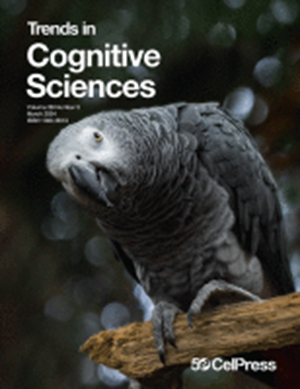如何使人工智能体更像自然智能体。
IF 17.2
1区 心理学
Q1 BEHAVIORAL SCIENCES
Trends in Cognitive Sciences
Pub Date : 2025-09-01
Epub Date: 2025-08-08
DOI:10.1016/j.tics.2025.07.004
引用次数: 0
摘要
使人工智能模型更像人类的探索可以从对生物制剂及其进化的研究中获益。最近的研究表明,与人类进化的动物物种采用了一系列质量上截然不同的代理架构,其复杂性不断增加,然后人类通过语言交流形成了共同的代理。本文章由计算机程序翻译,如有差异,请以英文原文为准。
How to make artificial agents more like natural agents.
The quest to make artificial intelligence models more human-like could profit from a study of biological agents and their evolution. Recent research suggests that animal species on the evolutionary line to humans employed a series of qualitatively distinct agentive architectures of ever-increasing complexity, with humans then forming shared agencies coordinated via linguistic communication.
求助全文
通过发布文献求助,成功后即可免费获取论文全文。
去求助
来源期刊

Trends in Cognitive Sciences
医学-行为科学
CiteScore
27.90
自引率
1.50%
发文量
156
审稿时长
6-12 weeks
期刊介绍:
Essential reading for those working directly in the cognitive sciences or in related specialist areas, Trends in Cognitive Sciences provides an instant overview of current thinking for scientists, students and teachers who want to keep up with the latest developments in the cognitive sciences. The journal brings together research in psychology, artificial intelligence, linguistics, philosophy, computer science and neuroscience. Trends in Cognitive Sciences provides a platform for the interaction of these disciplines and the evolution of cognitive science as an independent field of study.
 求助内容:
求助内容: 应助结果提醒方式:
应助结果提醒方式:


